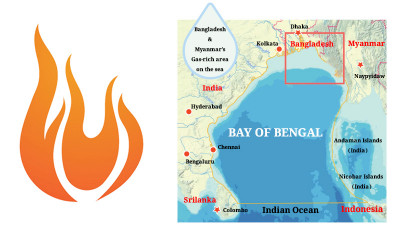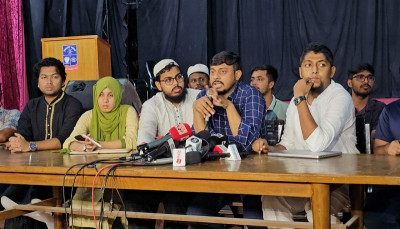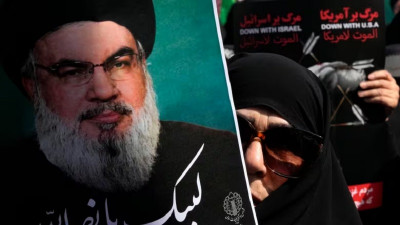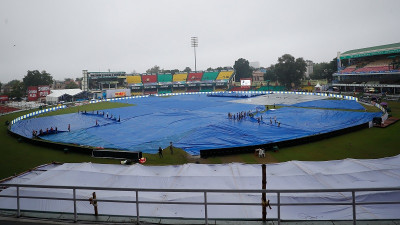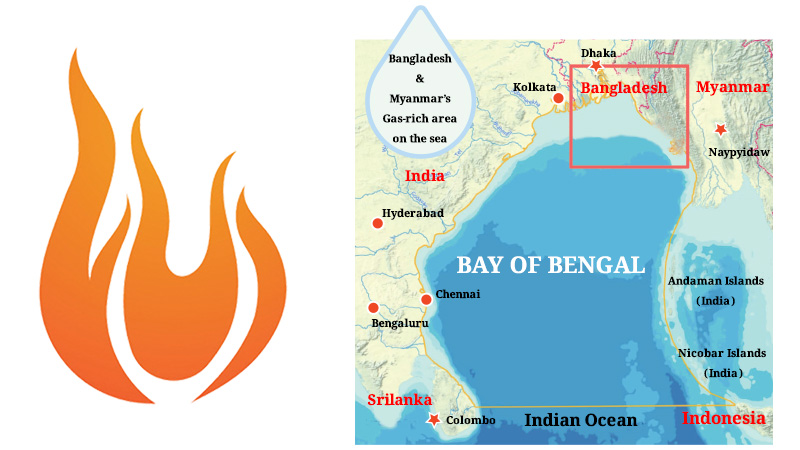 Photo: Bonik Barta
Photo: Bonik Barta Neighboring
Myanmar has approximately 23 trillion cubic feet (Tcf) of gas reserves. At one
point, it was said that the country’s gas reserves would meet its domestic
demand for at least 150 years. For a long time, Myanmar exported surplus gas to
China and Thailand. However, the ongoing civil war has disrupted the country’s gas
extraction activities. Several Western companies have halted their operations
in Myanmar, leaving consumers to face a gas shortage despite the surplus.
Foreign
oil and gas companies once recognized Myanmar’s gas potential and invested
heavily in the sector. However, years of political instability and geopolitical
crises have jeopardized their operations in Myanmar. After the military junta’s
coup ousting the elected government in 2021, the country’s instability reached
its peak. Political disputes escalated into civil war, leading foreign
companies to withdraw their investments. The gas sector collapsed, and
electricity production also suffered.
Bangladesh
was also once considered a gas surplus nation. The country has a proven gas
reserve of about 30 trillion cubic feet (Tcf), though over 21 Tcf has already
been extracted. Various foreign surveys have suggested that Bangladesh may have
even larger reserves. Colorado-based consultancy firm Gustavson Associates
presented a report in 2011 estimating the country’s potential gas reserves at
38 Tcf, with a 50 percent probability of reserves exceeding 63 Tcf. Despite
this report, the government dismissed Gustavson’s findings. No steps were taken
to explore these potential reserves. Instead of pursuing exploration, the
government increased dependency on imports, exacerbating the gas sector’s
crisis.
Energy
experts believe that both Bangladesh and Myanmar have always had significant
potential in the gas sector. Once seen as surplus nations, Myanmar now
struggles to extract enough gas due to its civil war, while Bangladesh has followed
a policy of LNG import dependency instead of investing in gas exploration and
extraction. Both nations are now facing severe crises in their gas sectors,
with energy security risks becoming more prominent in their economies.
The
Myanmar government has recently taken the initiative to invite international
tenders for oil and gas exploration in the Bay of Bengal. Additionally, it has
restructured its energy plans to rely on domestically extracted gas. Similarly,
Bangladesh issued an international tender for oil and gas exploration in the
Bay of Bengal this March, with several multinational companies expressing
interest. However, there are concerns that the Rohingya crisis could hamper
exploration activities in the Bay of Bengal for both Bangladesh and Myanmar.
Geopolitical analysts believe that unless the Rohingya crisis is resolved
peacefully, the resource extraction process in the Bay of Bengal is likely to
face significant disruption.
In
Bangladesh, Chevron’s Bibiyana gas field remains the largest supplier to the
national grid. Chevron also operated in Myanmar but decided to withdraw its
investment as the country’s political instability following the military coup
began to shift towards civil war. Most recently, in April of this year,
Thailand’s state-owned fossil fuel extraction company PTT Exploration and
Production Company (PTTEP) announced that Chevron’s subsidiary Unocal Myanmar
Offshore Company (UMOC) had withdrawn its investment from Myanmar’s largest gas
project, Yadana. PTTEP and local partner firms have since taken over UMOC’s
share in the project. According to media reports, gas reserves in Yadana are
nearing depletion, and the civil war has made it impossible to ramp up
extraction and exploration activities in other fields in Myanmar.
Bangladesh
has a long history of gas exploration. The first tender under the PSC framework
was issued in 1974 after independence. However, international oil and gas
companies became more active in the 1990s. Two international tenders were
issued during this time under the PSC framework, resulting in the discovery of
five gas fields. In 1993, Petrobangla signed agreements with multinational
companies to explore eight gas blocks. Under the PSC framework, the US company
Occidental was awarded exploration rights for blocks 12, 13, and 14, while
Dutch-based Cairn Energy signed agreements for blocks 15 and 16. Additionally,
Rexwood Auckland was awarded blocks 17 and 18, and United Meridian was awarded
block 12.
In
1997, Petrobangla issued another international tender for larger-scale gas
exploration on land under the PSC framework, covering four blocks. Shell and
Cairn Energy jointly explored block 5; Unocal Corporation explored block 7;
Tullow and Chevron-Texaco explored block 9; and Shell and Cairn Energy jointly
explored block 10. The exploration in block 9 led to the discovery of the
Bangura gas field, where Tullow found 1,100 billion cubic feet (Bcf) of gas.
From
2008 to 2012, under the jurisdiction of the PSC (Production Sharing Contract),
several offshore blocks were opened for tender in Bangladesh. In 2008, joint
ventures between ConocoPhillips and BAPEX aimed at exploring gas in DS-8 and
DS-10 blocks. However, these explorations did not yield any significant
discoveries. Subsequently, until 2012, tenders were invited for three more
blocks. In blocks SS-4 and SS-9, BAPEX collaborated with the Indian company
ONGC Videsh, while in block SS-11, joint exploration was conducted between
BAPEX and Santos-KrisEnergy. These endeavors also failed to uncover any new gas
fields.
In
2016, under the Quick Enhancement of Electricity and Energy Supply (Special
Provisions) Act 2010, the government leased blocks DS-10, DS-11, DS-12, and
SS-10 to South Korea’s POSCO Daewoo Corporation. However, apart from ONGC
Videsh, most other companies eventually abandoned these blocks.
According
to energy expert and geologist Professor Badrul Imam, the lack of substantial
gas exploration in Bangladesh primarily stems from a lack of interest. He
highlighted to Bonik Barta, “The focus was more on imports than on discovering
reserves. As a result, while gas was consumed, no significant initiatives were
taken to secure reserves. Various internal and geopolitical factors also played
a role over the years. Following the resolution of the maritime boundary
dispute with Myanmar, Bangladesh had a significant opportunity for large-scale
gas exploration in the sea, but this opportunity was not utilized. Conversely,
after resolving their maritime boundary, Myanmar brought in foreign oil and gas
companies and found gas reserves. For more than two decades, internal and
geopolitical challenges hindered Bangladesh’s exploration efforts. Despite
strong prospects of finding gas, many areas remained unexplored. If these areas
had been investigated, Bangladesh could have confirmed whether gas existed or
not. After settling the maritime boundary with Myanmar and India, both
countries found gas reserves through exploration, but Bangladesh, for reasons
unknown, failed to conduct similar explorations.” Professor Imam blamed this
inaction on a lack of interest and a focus on import-dependent policies.
The
maritime boundary dispute with India was resolved in 2014. Although 10 years
have passed since then, Bangladesh has not shown any significant activity in
deep-sea exploration. Meanwhile, India has made considerable progress, with
state-run Oil and Natural Gas Corporation Limited (ONGC) discovering large
deposits of oil and gas earlier this year in the deep sea, just 35 kilometers
off the coast of Andhra Pradesh.
On
the other hand, it has been 14 years since Bangladesh settled its maritime
boundary with Myanmar and 10 years with India. During this period, Bangladesh
has seen no success in oil and gas extraction in the deep sea. Experts accuse
the country of delaying exploration and focusing too heavily on
import-dependent energy policies. While Myanmar and India have ramped up
efforts and secured foreign investments, Bangladesh has remained stagnant,
resulting in its vast maritime energy resources staying untapped.
Former
BUET professor and energy expert Ijaz Hossain told Bonik Barta, “Myanmar had
made some progress in gas exploration, but internal issues like military rule
have hindered their progress. On the other hand, Bangladesh has largely failed
in its gas exploration efforts. The country has always been skeptical about the
existence of gas reserves, leading to decisions influenced by politics and
geopolitics. However, there were opportunities to bring in large foreign
companies for exploration. Bangladesh
missed out on significant potential.”
For
over two decades, the gas sector has seen minimal investment, leading to an
increase in import dependence. Exploration in the country has mostly been
conducted by the state-owned company BAPEX. Since the company’s inception, there
has been investment of a total of BDT 40 to 50 billion in exploration and
surveys.
From
2009 to 2024, the Energy Division claims to have discovered six new gas fields.
In this period, 21 exploration wells, 50 development wells, and 56 workover
wells have been drilled. Additionally, six-thousand kilometers of 3D seismic
surveys have been conducted, along with the construction of 1,355 kilometers of
gas transmission pipelines and facilities for oil storage and supply pipelines.
Currently,
Petrobangla is drilling 50 wells as part of the ongoing gas exploration efforts
in the country. By mid-2025 to 2028, it plans to drill at least 100 more wells,
with an estimated cost of around BDT 200 billion.

